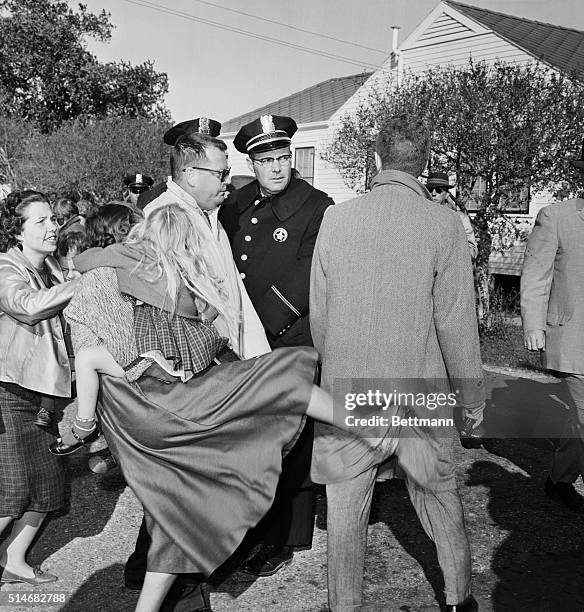How To Build A Mentally Supportive Community: 5 Practical Steps

Table of Contents
Establish Clear Values and Ground Rules
Creating a safe and inclusive space is paramount for a successful mentally supportive community. This requires defining what constitutes respectful communication and behavior from the outset. Ambiguity can lead to misunderstandings and conflict, undermining the very foundation of support you're trying to build.
- Develop a community charter outlining expectations for members. This document should clearly articulate the community's values, goals, and rules of conduct. Include specific examples of acceptable and unacceptable behavior.
- Emphasize empathy, active listening, and non-judgmental support. Members should understand that the community is a place where they can be vulnerable without fear of criticism or ridicule. Promote a culture of understanding and respect for diverse experiences and perspectives.
- Establish clear consequences for violating community guidelines. This could range from warnings to temporary or permanent expulsion, depending on the severity of the infraction. Transparency and consistency in enforcing these guidelines are vital for maintaining a safe and respectful environment within your mentally supportive community.
Setting clear expectations from the outset is crucial for building trust and ensuring a positive environment for all members of your mentally supportive community. A well-defined framework allows members to feel secure and confident in their participation, fostering a sense of belonging and encouraging open communication.
Foster Open and Honest Communication
Open communication is the cornerstone of any strong mentally supportive community. It enables members to share their struggles and celebrate successes without fear of judgment. Creating opportunities for deeper connection and understanding is key to fostering a truly supportive environment.
- Host regular meetings or online forums for open discussion. These platforms provide structured opportunities for members to connect, share their experiences, and offer support to one another. Consider using a mix of online and offline meetings to cater to different preferences.
- Utilize icebreaker activities to facilitate connection. Fun and engaging icebreakers can help members feel more comfortable and open to sharing with one another. These activities can be particularly helpful in building rapport amongst new members.
- Implement anonymous feedback mechanisms to encourage honest opinions. Anonymous feedback mechanisms can help identify areas for improvement within the community and address concerns without fear of retribution. This can help create a more inclusive and responsive mentally supportive community.
Open communication allows for the free flow of information and support, essential for a thriving mentally supportive community. It fosters a sense of shared experience and reduces feelings of isolation.
Prioritize Active Listening and Empathy
Truly supporting mental wellbeing requires understanding and validating others' experiences. Active listening and empathy are vital tools in building a strong mentally supportive community. Training members in these skills will significantly improve the quality of support offered within the group.
- Organize workshops on effective communication skills. These workshops can teach members valuable techniques for active listening, empathy, and non-violent communication.
- Encourage members to practice empathy and perspective-taking. Promote a culture of understanding and acceptance by encouraging members to see things from others' viewpoints. Role-playing exercises can be beneficial here.
- Provide resources on mental health awareness and support. Make sure members have access to information about mental health conditions, available resources, and crisis support services.
Active listening and empathy are the cornerstones of a truly effective mentally supportive community. By prioritizing these skills, you foster a culture of understanding, validation, and genuine care.
Offer Diverse Activities and Support Resources
A vibrant mentally supportive community offers diverse opportunities for engagement, ensuring that all members find activities they enjoy and can benefit from. Catering to different interests and needs is crucial for building a strong and inclusive group.
- Organize social events, workshops, or online groups. Offer a variety of activities to appeal to different preferences and interests. This could include anything from social gatherings to skill-building workshops to online support groups.
- Create a directory of helpful mental health professionals and organizations. Provide members with easy access to relevant mental health resources, including therapists, support groups, and helplines.
- Offer peer support initiatives and mentoring programs. Pair experienced members with newcomers to provide guidance and support. Peer support can be incredibly valuable in a mentally supportive community.
Providing a range of activities and resources ensures inclusivity and strengthens the overall support network within your mentally supportive community.
Celebrate Successes and Foster Resilience
Celebrating successes and fostering resilience helps to build a positive and supportive environment within your mentally supportive community. Acknowledging achievements and providing tools for coping with challenges strengthens the bonds within the group and builds individual strength.
- Organize regular celebrations to acknowledge achievements. Celebrate both big and small wins to foster a sense of accomplishment and shared success.
- Share stories of resilience and overcoming challenges. Sharing personal stories can inspire and motivate other members to overcome their own difficulties.
- Offer resources on stress management and self-care techniques. Equip members with the skills and resources they need to manage stress and build resilience.
Celebrating successes and fostering resilience creates a positive feedback loop, strengthening both individual members and the mentally supportive community as a whole.
Conclusion
Building a thriving mentally supportive community requires effort and commitment, but the rewards are immeasurable. By implementing these five steps – establishing clear values, fostering open communication, prioritizing empathy, offering diverse resources, and celebrating successes – you can create a supportive network that empowers individuals and strengthens mental wellbeing. Start building your mentally supportive community today and experience the transformative power of connection and shared support. Remember, a strong community is built on mutual respect, understanding, and the collective commitment to fostering mental health.

Featured Posts
-
 The Fallout From The Justice Departments School Desegregation Decision
May 02, 2025
The Fallout From The Justice Departments School Desegregation Decision
May 02, 2025 -
 Impact Of Justice Departments Decision To End School Desegregation Order
May 02, 2025
Impact Of Justice Departments Decision To End School Desegregation Order
May 02, 2025 -
 Officieel Bram Endedijk Is De Nieuwe Presentator Van Nrc Vandaag
May 02, 2025
Officieel Bram Endedijk Is De Nieuwe Presentator Van Nrc Vandaag
May 02, 2025 -
 From Slytherin To Now The Transformation Of Crabbe
May 02, 2025
From Slytherin To Now The Transformation Of Crabbe
May 02, 2025 -
 Ultra Low Growth Forecast For Canadas Economy In 2024 David Dodges Prediction
May 02, 2025
Ultra Low Growth Forecast For Canadas Economy In 2024 David Dodges Prediction
May 02, 2025
Latest Posts
-
 40 Palantir Stock Growth By 2025 A Realistic Investment Opportunity
May 10, 2025
40 Palantir Stock Growth By 2025 A Realistic Investment Opportunity
May 10, 2025 -
 Should You Buy Palantir Stock Before Its Predicted 40 Rise In 2025
May 10, 2025
Should You Buy Palantir Stock Before Its Predicted 40 Rise In 2025
May 10, 2025 -
 Palantir Stock Forecast 2025 Analyzing The Potential For A 40 Jump
May 10, 2025
Palantir Stock Forecast 2025 Analyzing The Potential For A 40 Jump
May 10, 2025 -
 Understanding The 1 400 Point Sensex Jump 5 Factors Fueling Market Growth
May 10, 2025
Understanding The 1 400 Point Sensex Jump 5 Factors Fueling Market Growth
May 10, 2025 -
 Investing In Palantir Weighing The Risks And Rewards Of A Potential 40 Increase By 2025
May 10, 2025
Investing In Palantir Weighing The Risks And Rewards Of A Potential 40 Increase By 2025
May 10, 2025
